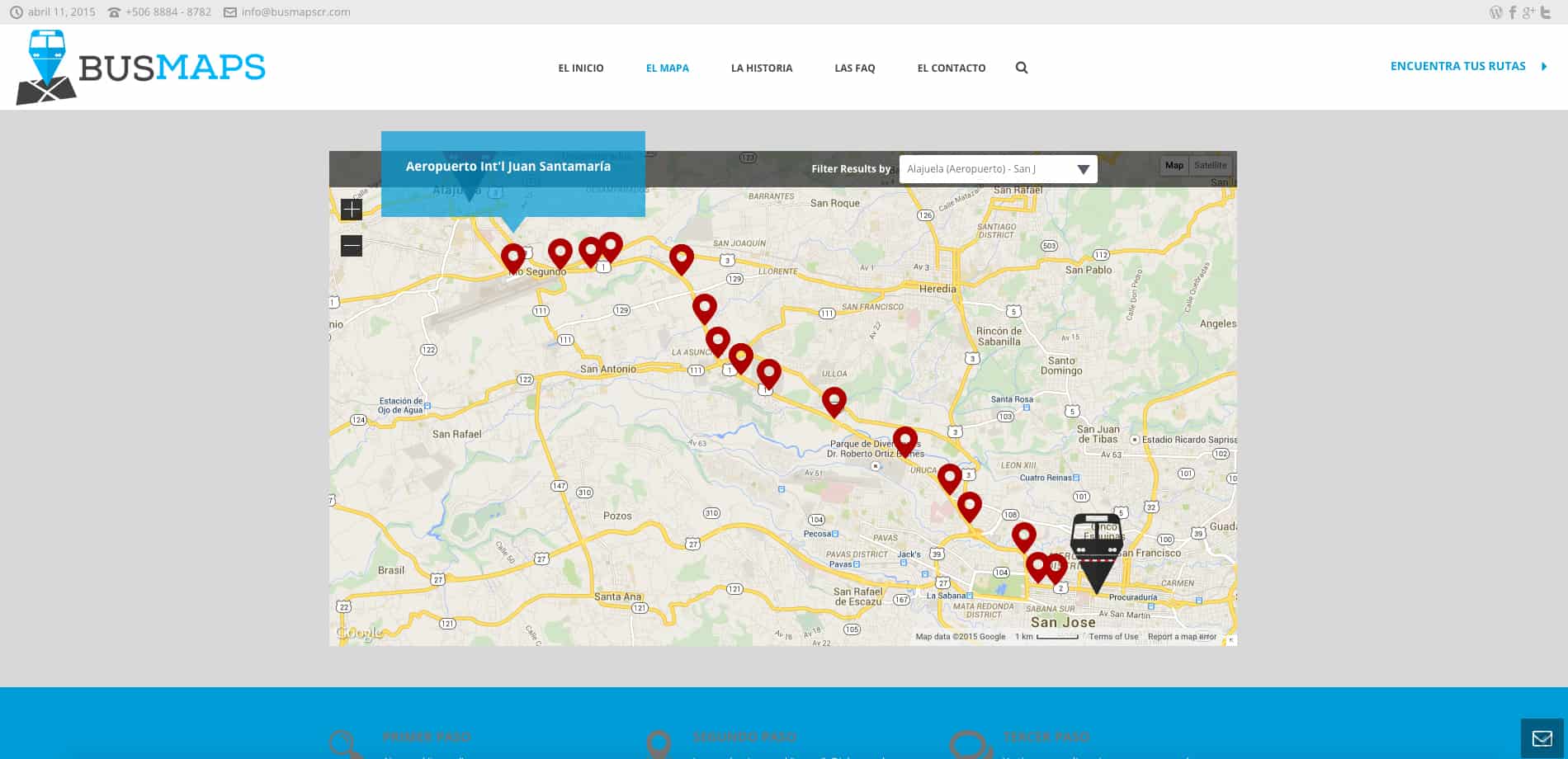Navigating Costa Rica’s public bus system is a challenge — even for locals. Without good information about where the bus stops and where it ends, many riders see their bus whoosh by them or never show up at all.
A group of Costa Rican entrepreneurs wants to make planning a trip on public transportation easier and more accurate with a soon-to-be-released smartphone app. And who knows, maybe they can even make a profit along the way.
Fernando Fung, 24, was born and raised in San José but when his girlfriend from the United States came to visit Costa Rica, he realized he couldn’t give her directions. One day she had to take the bus and he didn’t know what route she should take or even where to find the bus stop.
He wasn’t alone. Bus stops are often unmarked and without shelter. Routes are uncertain; schedules and changes in service are not posted. Rituals only known to hardened riders govern where to wait for the driver to make change out of the day’s fares.
And if a rider needs to take a new route, there’s no way to know which bus to take or where to transfer without relying on the kindness of other riders.
“I was so embarrassed to say I didn’t know which bus she should take,” Fung told The Tico Times. “But if I couldn’t do it after living here 20 years, how many more people like me were out there?”
Fung had already been toying with an idea to centralize public transportation information when he was a student at Pace University in New York. When he couldn’t give directions, he realized that the public transportation system’s inefficiency presented a business opportunity.
BusMaps Costa Rica was born.
There are more than 400 bus companies operating 690 routes across Costa Rica, according to the Public Transportation Administration. That leaves the bus system fractured and low tech.
There is no central service where passengers can look up schedules and bus stops. Google Maps shows some bus stops but the information is far from complete.
ARESEP, the government agency that oversees public services, offers the app Mi Ruta (My Route), which lists the prices of bus routes and allows passengers to report illegal fares. But it doesn’t include schedules or stops along the routes.
Fung, working with co-founder Sivianni Rodriguez and chief technical officer Luis Fernando Key, started to develop a platform that used Google Maps to plot the beginning and end points of the routes and their stops along the way.
Today, BusMaps has 36 routes mapped, covering 250 terminals and 2,000 stops. It claims 3,000 active daily users.
BusMaps Costa Rica is currently only available online through a web browser. A smartphone app for Android and iOS is on the way and could be available as early as the end of April.
Collecting the information for the routes was a time-consuming process, Fung said. His team requested routes from private bus operators, ARESEP, the Costa Rican Tourism Board and other public agencies. But often the information was incomplete or out of date.
“We realized that the bus companies didn’t even know their own routes and stops,” Fung said.
In the end, Fung and colleagues literally rode every line. With pockets full of change, they boarded the buses, talked with drivers and snapped photos of the bus stops, assigning them landmarks and geocodes so riders could identify them. Developers entered the locations into the map to allow passengers to select specific routes with all the stops listed.
Fung said as soon as the mobile app launches his team will start to add another 10 routes to the platform.
The app is currently free and angel investors are supporting the project’s start-up phase. But Fung hopes to eventually make money off the app, possibly by allowing passengers to pay bus fares electronically with their smartphones, or through advertising that would alert people to events or deals nearby.
If Bus Maps Costa Rica does everything Fung and his team say it will, the only frustrating thing left about riding the bus will be sitting in traffic.






